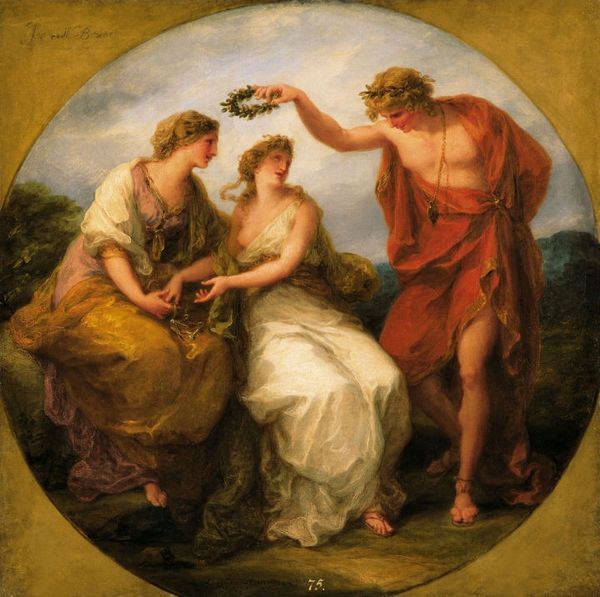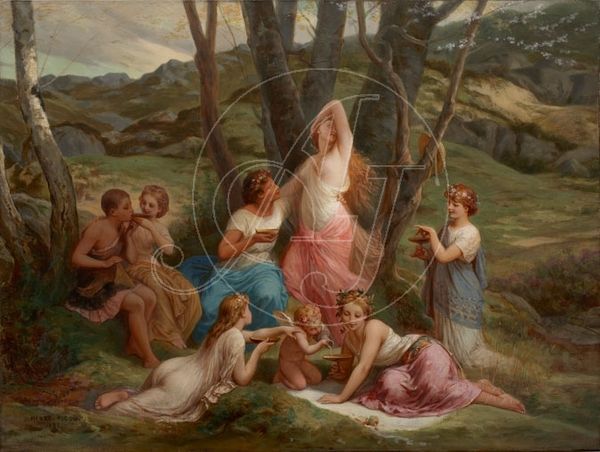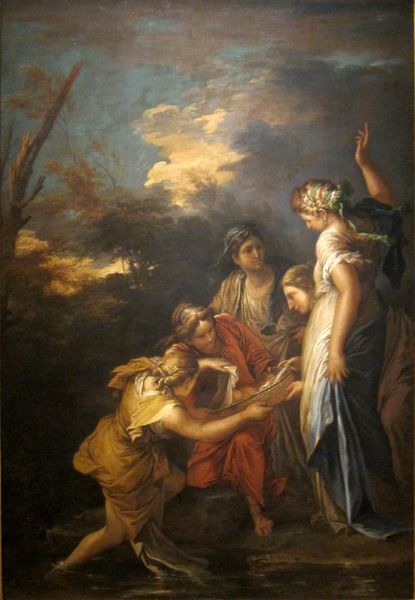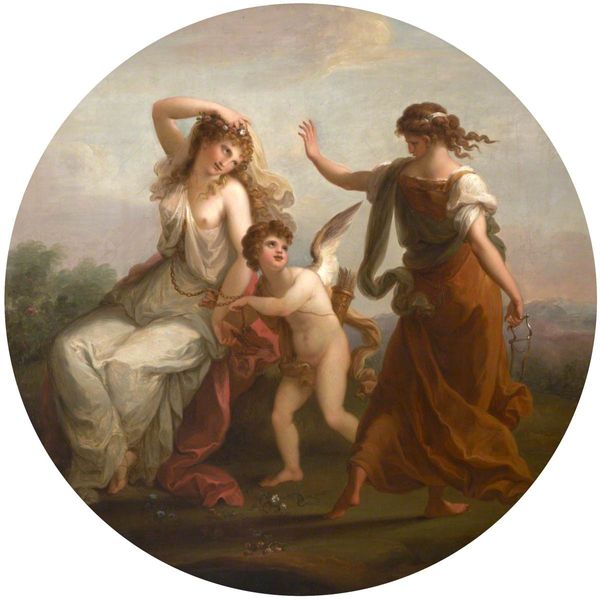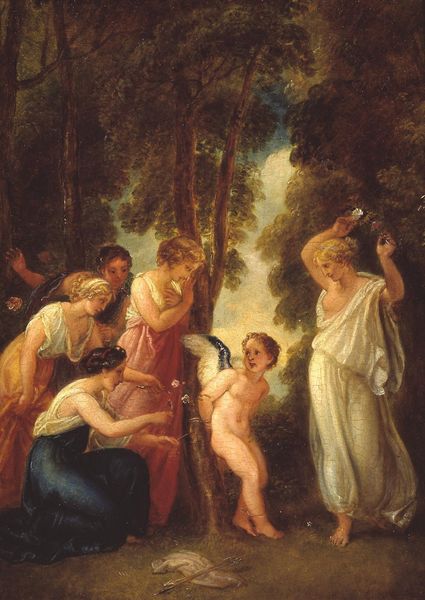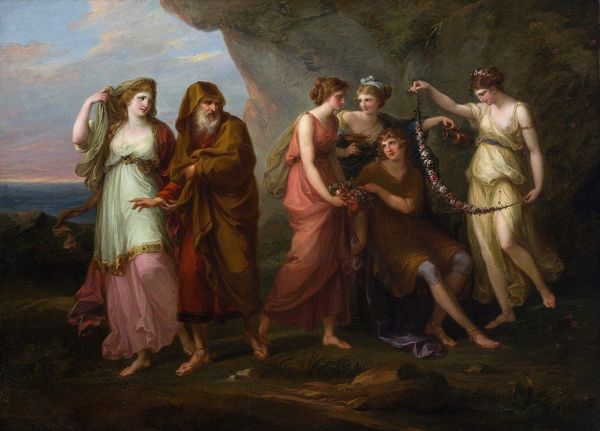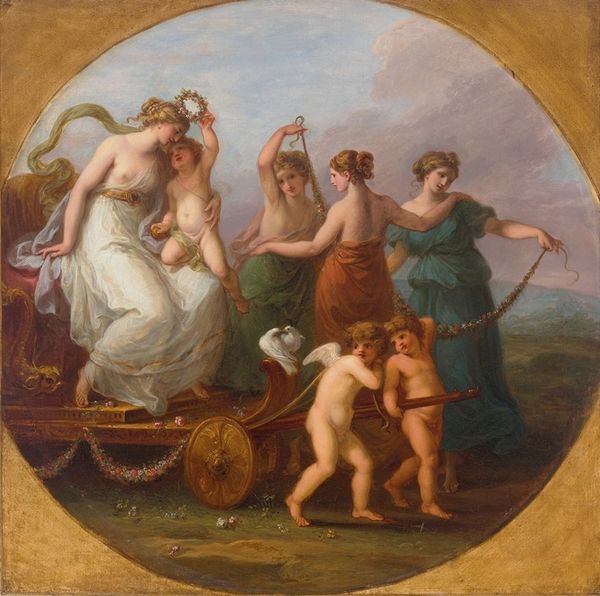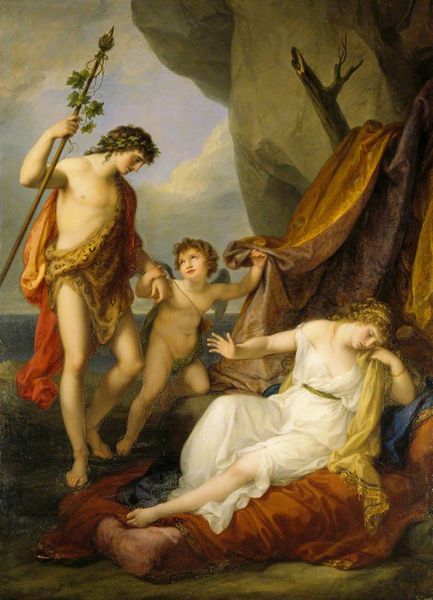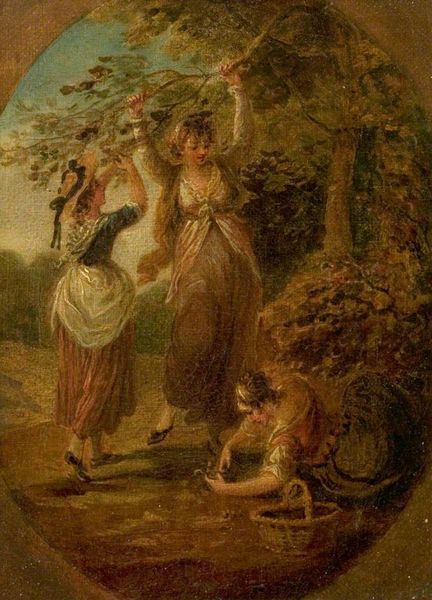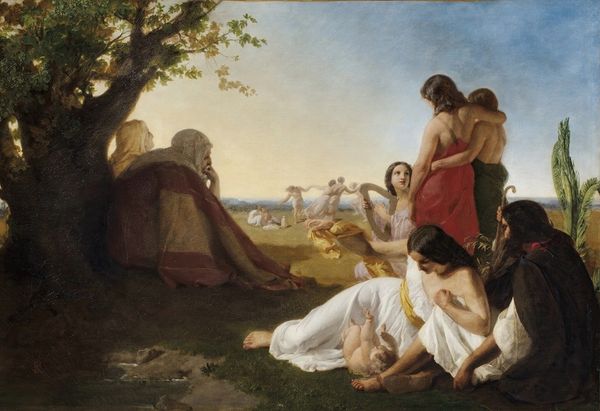
#
possibly oil pastel
#
oil painting
#
portrait reference
#
acrylic on canvas
#
animal drawing portrait
#
portrait drawing
#
facial portrait
#
portrait art
#
fine art portrait
#
digital portrait
Copyright: Public domain
Curator: Henri-Pierre Picou, a prominent figure in the Neo-Grec movement, presents us with "Clipping Cupid's Wings." What a charged tableau! Editor: Indeed! My immediate sense is one of enforced conformity. The muted earth tones amplify that slightly ominous sensation. There's a clear attempt to constrain passion, isn’t there? Curator: Absolutely. Picou engages with classical mythology to interrogate societal expectations, particularly for women. The central scene shows the three women holding cupid, while a fourth figure takes aim with Cupid's bow. We need to look at whose hands and by which measure love gets refigured. Consider how these women, potentially allegorical figures of reason or virtue, decide the terms of love's power. Editor: I’m struck by the scissors in the hand of the woman on the right—they almost resemble shears. In many cultural contexts, birds signify the soul. This brings in a potent layer: it is not only romantic love that is under attack, but perhaps, broader spiritual flight. Look also to Cupid's expression as if he foresees the effect of his potential constraint. Curator: And observe where they stand; on the right is a partially enclosed square. Their control seems determined, rigid, possibly leading to social imprisonment or death to creativity when free expression is not an option. What's also so important about works such as this one, that deal with Greek characters, is understanding this as a potential commentary of the artist’s present: constraints from religion, societal roles or even political changes in nineteenth century France. Editor: It's fascinating how Picou layers these seemingly timeless myths to reflect contemporary anxieties about control and perhaps even self-control and the imposition of that ideal onto others. In addition to the partially enclosed square, a wispy character to the left attempts to exit the scene and her attempts look nearly as labored. What symbols were accepted by this artist's culture to show one form or another of freedom? Curator: Well, it becomes very clear how his classical rendering can speak to complex discussions on how our freedoms of expression or thought may get trimmed down. It pushes us to resist passively interpreting myths. Editor: Agreed. Picou compels us to dissect the images we take for granted and examine whose narratives they truly serve, while love's form still begs a definition of its most ideal freedom.
Comments
No comments
Be the first to comment and join the conversation on the ultimate creative platform.
